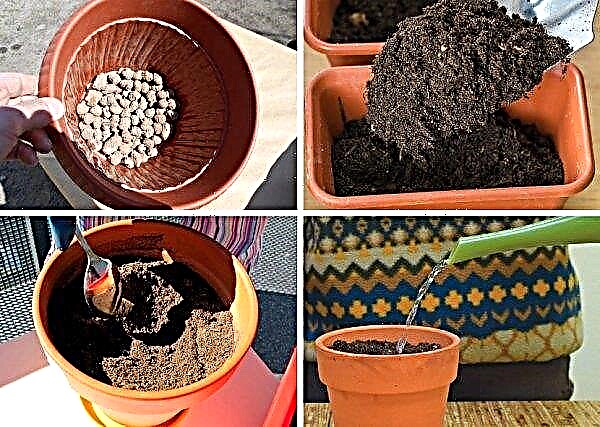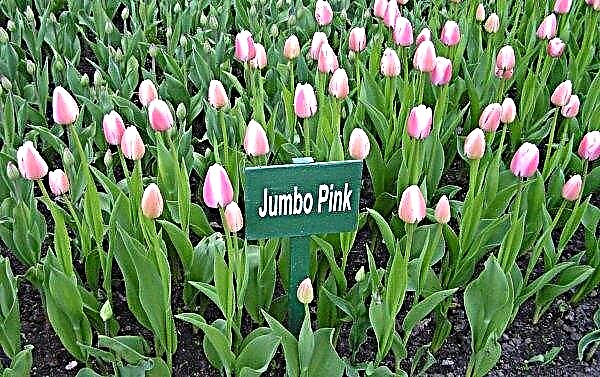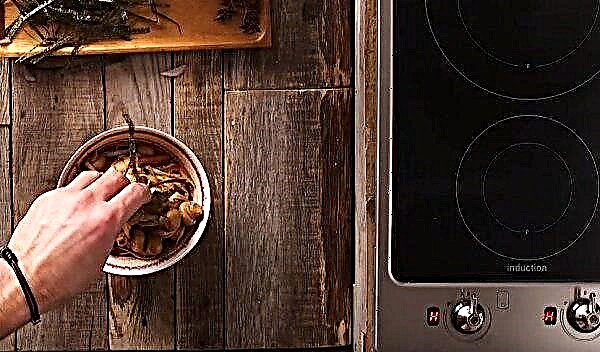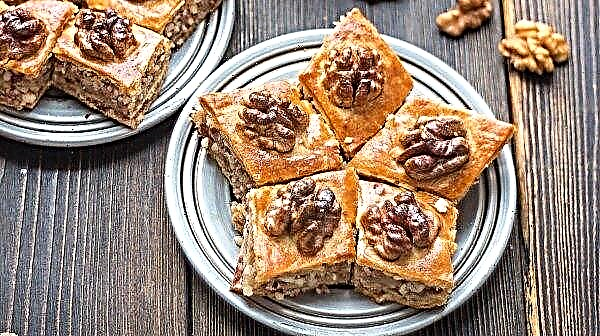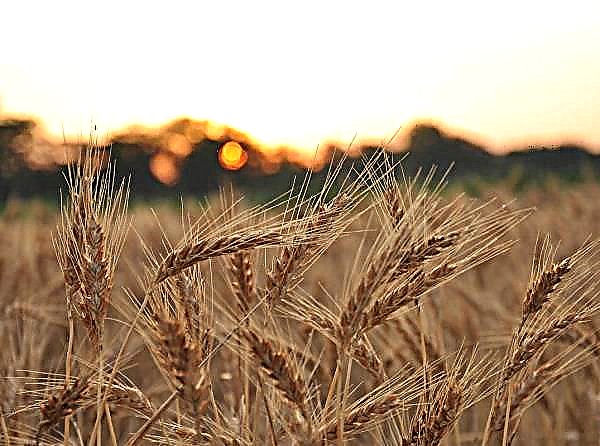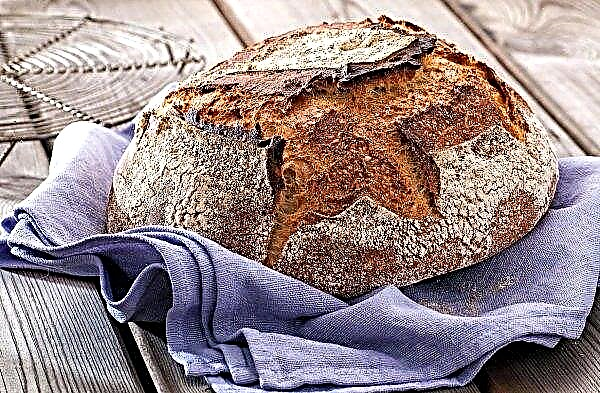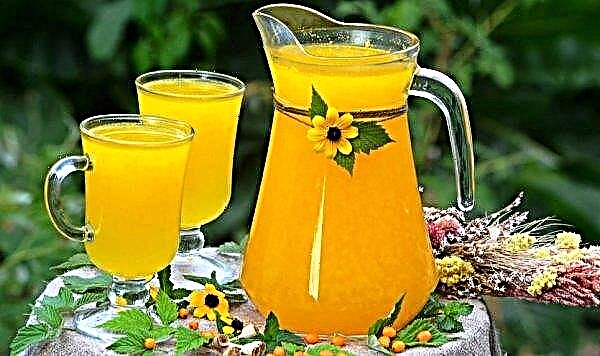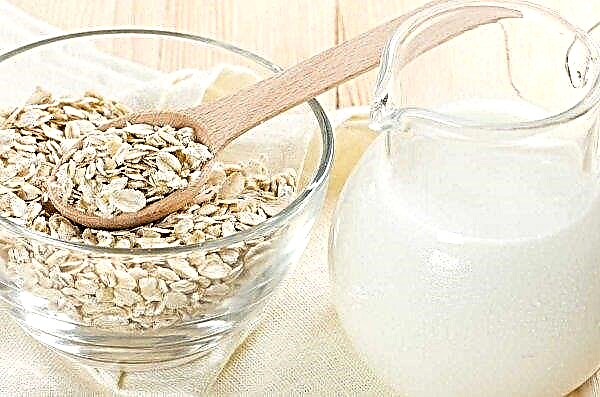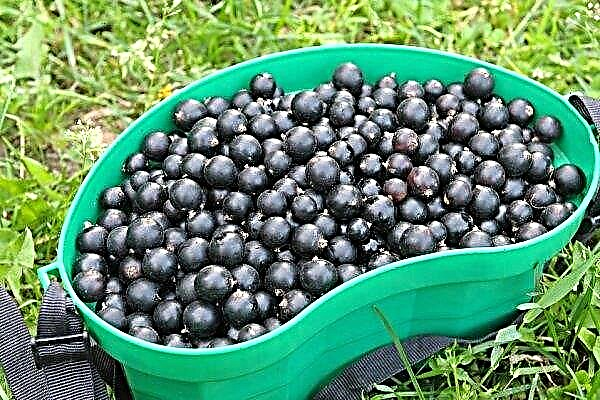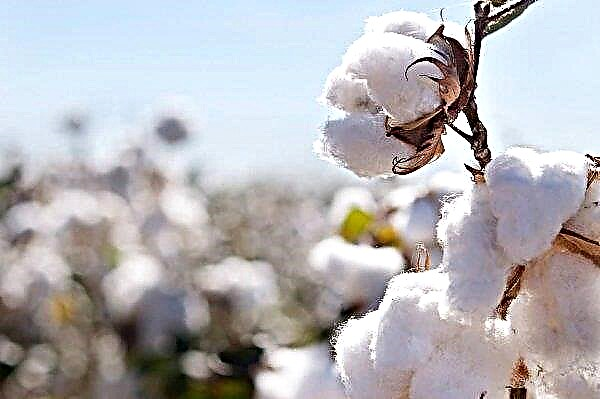Turnips of our ancestors were the main dish on the dining table. But in the modern world, interest in this vegetable has been lost, but in vain, because the radish is a treasury of vitamins and minerals. Before you start eating this vegetable raw in food, you should find out if other people eat it.
Is it possible to eat raw turnips
This root crop can be eaten both raw and baked. It is recommended to prepare vitamin salads and juice from a fresh vegetable. The raw vegetable has an analgesic, healing effect for wounds, and its juice is immunostimulating. The composition contains succinic acid, which is a biostimulant, which is why turnip is considered an excellent antidepressant. However, this vegetable contains sugar, so it should not be abused.
Did you know? In the town of Richterswil (Richterswil) on the shores of Lake Zurich annually in early November held a turnip festival with a grand parade. Some vegetables turn into works of art, decorating them with carvings.
Chemical composition
According to botanical characteristics, this is a one-year or two-year root crop of the Cabbage family, a close "relative" of radish and radish. About 50 varieties of this vegetable are grown in the world. The chemical composition of a vegetable affects its beneficial qualities. It contains a lot of trace elements and vitamins that are necessary for human health. Turnip contains virtually no fat (0.1 g per 100 g).
100 g of vegetable contains such minerals:
- sodium - 58.00 mg;
- potassium - 238.00 mg;
- calcium - 49.00 mg;
- magnesium - 17.00 mg;
- phosphorus - 34.00 mg;
- iron - 0.90 mg.
The structure of the root crop also includes nitrogen-free and nitrogenous substances. Their specific gravity is, respectively, 6.5 and 1.1%.
Raw Turnip Properties
This root crop for many millennia, along with bread and cereals, has been the basis of the diet of the population in most European countries. The vitamins and microelements in the vegetable determine the presence of useful qualities in it. Turnip is a vegetable of female beauty. It neutralizes the acidity of the blood, promotes the dissolution of uric acid.
It also strengthens the hairline and nail plate. Earlier in the northern regions of Eurasia, this root crop could be eaten to combat scurvy, now it is used to prevent vitamin deficiency. Using root vegetables to satisfy hunger, observe the measure, because the abuse of this product can harm your health.
Important! The turnip contains vitamins B1 and B2, the lack of which leads to rapid aging of the body, hair loss and graying.
Benefit
The turnip contains the necessary element for the human body - glucoraphanin, which prevents the occurrence of cancer and regulates the level of glucose in the blood. Let's consider in more detail whether raw turnips are useful. In this vegetable you can find all the necessary trace elements and minerals for the body (sulfur, magnesium, sodium, potassium, beta-carotene). With the help of sulfur, kidney stones are cleaved and blood is cleansed. Magnesium also helps the body absorb the necessary amount of calcium and strengthen bone tissue. The bones become elastic at the same time. The composition of the vegetable also includes zinc and iodine. Due to the content of ascorbic acid, immunity is strengthened, therefore this vegetable should be consumed during colds and viral diseases.
Magnesium also helps the body absorb the necessary amount of calcium and strengthen bone tissue. The bones become elastic at the same time. The composition of the vegetable also includes zinc and iodine. Due to the content of ascorbic acid, immunity is strengthened, therefore this vegetable should be consumed during colds and viral diseases.
The rare and valuable substance mentioned above - succinic acid takes an active part in the metabolism. It also has an active effect on men's health. When they use this product, their potency increases, sexual function is restored, and hormonal balance is normalized. The root crop is able to combat increased sweating, removing toxins from the body.
Harm and contraindications
Excessive abuse of turnips can lead to poor health in some diseases. The root vegetable contains essential oils that can irritate the intestinal mucosa, which leads to diseases of the gastrointestinal tract. The root crop is contraindicated in patients with peptic ulcer of the stomach and duodenum. This vegetable must be excluded from the menu for people suffering from food allergies, diseases of the central nervous system, as well as a disorder of the liver and kidneys. This fruit is contraindicated in people with thyroid disease. Patients with diabetes must strictly observe not only the consumption rate, but also give preference to unsweetened varieties. The root crop is recommended to be cooked if the disease is not in an acute form of development. In each case, it is necessary to consult with your doctor about the use of turnips.
This fruit is contraindicated in people with thyroid disease. Patients with diabetes must strictly observe not only the consumption rate, but also give preference to unsweetened varieties. The root crop is recommended to be cooked if the disease is not in an acute form of development. In each case, it is necessary to consult with your doctor about the use of turnips.
Calorie Raw Turnip
It is useful for people who use turnips to know how many calories are in this vegetable. So, the calorie content of raw turnips is only 30–32 kcal / 100 g, because 90% of it consists of water. Turnip should not be carried away, as it is referred to products with a high glycemic index (70 units). After the heat treatment, the calorie content of the product increases to 33 kcal, and the glycemic index - up to 85 units. Also, the vegetable contains 0.5 g of fat, 2.9 g of carbohydrates and 3.2 g of protein.
Important! The root crop should be excluded for young mothers during lactation, and it is also not worth introducing it into the diet for children under 2 years old, since the baby may have unforeseen reactions from the gastrointestinal tract.
How to use raw turnips
Do not abuse this root crop in your daily diet. It will be enough for an adult to eat 200-300 g of vegetable per day. To avoid digestive problems, it is advisable to use it boiled or steamed.
Using Turnips
The nutrients contained in the vegetable have a healing effect on the internal organs of a person. Healing properties are possessed not only by the root crop, but also by the green tops of the plant. For the preparation of salads and borsch, it is recommended to use foliage as a vitamin complex. The root crop is able to be stored for a long time without losing its healing qualities, and is also easily absorbed by the human body. It can be pickled and dried. Due to the bright taste, it is recommended to cook it without adding spices.
In dietetics
This root vegetable is known as a healthy dietary product. For cooking, they use not only root crops (vegetable and salad), but also foliage (leaf and salad varieties). Supporters of diets recommend including it in the diet due to the content of cellulose, which saturates the body with all the nutrients and does not lead to weight gain. The fiber content in turnips leads to the normalization of appetite and improve digestion. There are no special diets based on turnips. If in a short period there is a desire to correct the figure, then you can safely use this product.
Did you know? A resident of England K. Butler, who lived in Nafferton in 1972, raised a turnip, which reached a weight of 15.975 kg. Later, in 1981, a gardener from Alaska was able to exceed this figure, since the weight of his vegetable was 23,100 kg.
In folk medicine
Traditional healers decided to use the most useful turnip product - its juice. When boiled, it is an excellent expectorant. The vegetable is perfect for smokers and those who suffer from lung diseases. Healers recommend using raw turnips to improve the cardiovascular system, as it brings pressure to normal. Turnip broth also treats toothache and insomnia. To fall asleep faster at night, you need to drink 1 cup of broth before bedtime.
Basic rules for selection and storage
Most often on the market you can find three varieties of this root crop:
- garden (with yellow pulp),
- white,
- the black.
The most basic characteristic of a vegetable is its ability to be stored fresh for a long time. Before the onset of the first frosts, the root crop must be dug up and put away for storage. The supercooled root crops are not suitable for storage. Turnips are also not susceptible to rot and mold. Before laying it for storage, it must be dried under cover, since under the open sun it will begin to fade. There are several effective ways of storing a vegetable:
There are several effective ways of storing a vegetable:
- In the refrigerator, root crops are stored for up to 1.5 months.
- To turnip preserved as long as possible in the winter, it is necessary to fill it with dry sand, pruning the tops.


